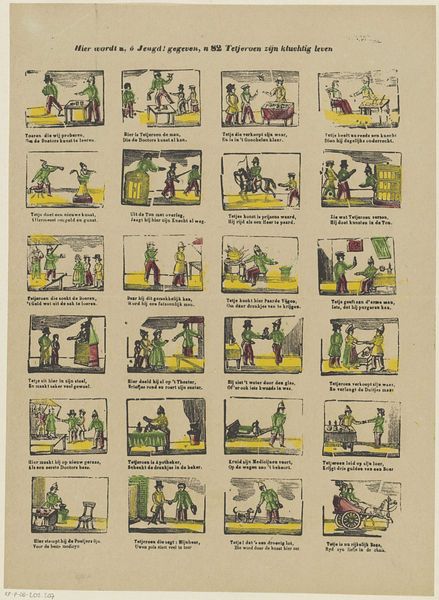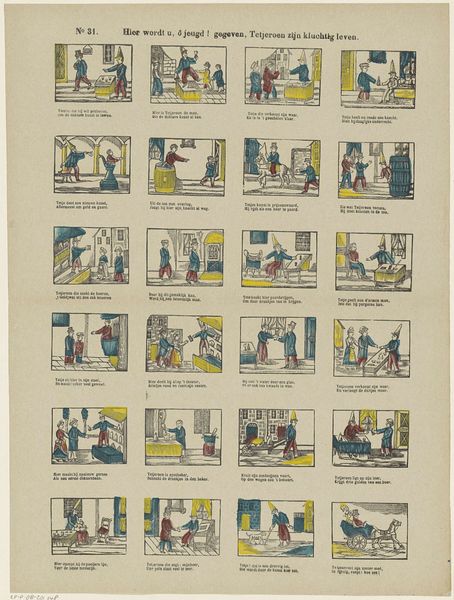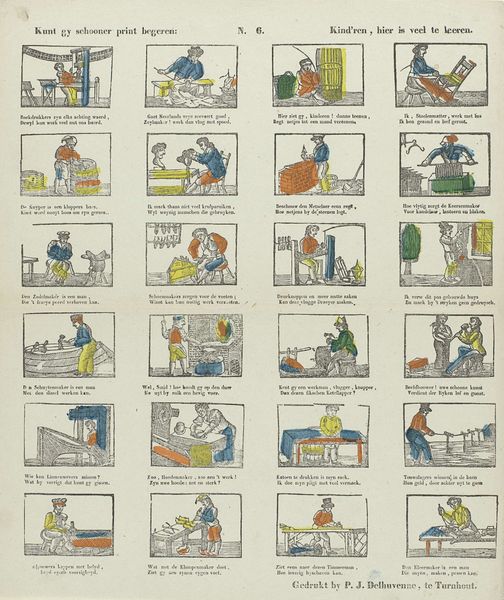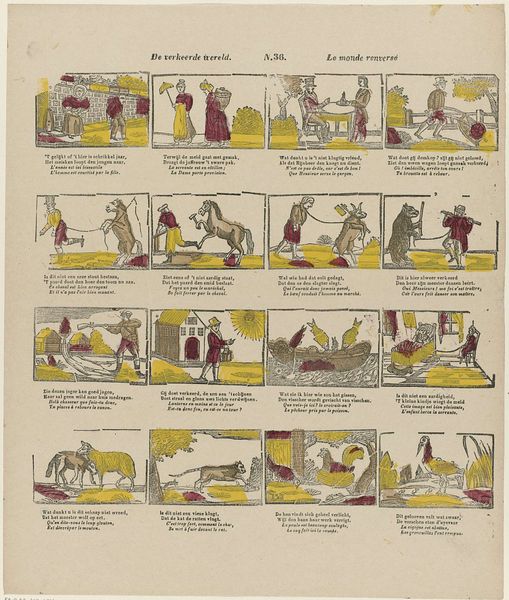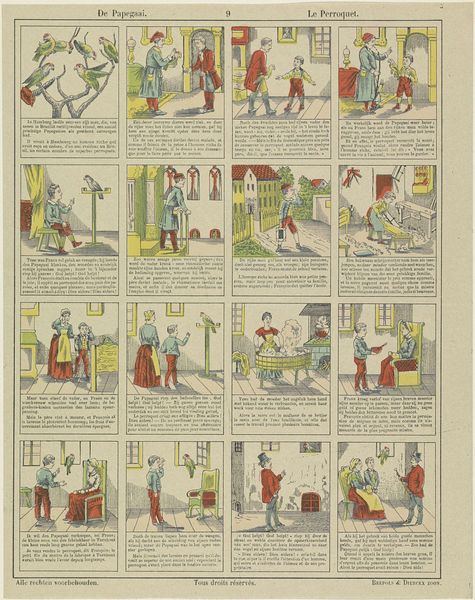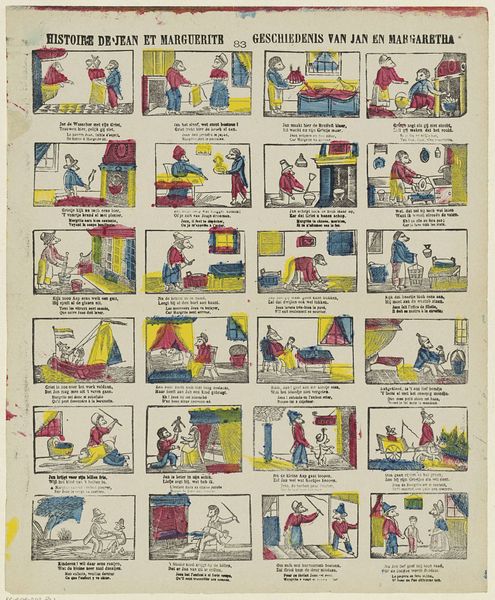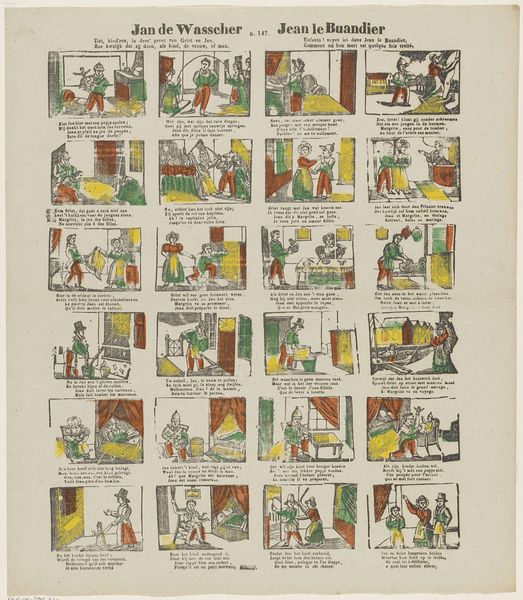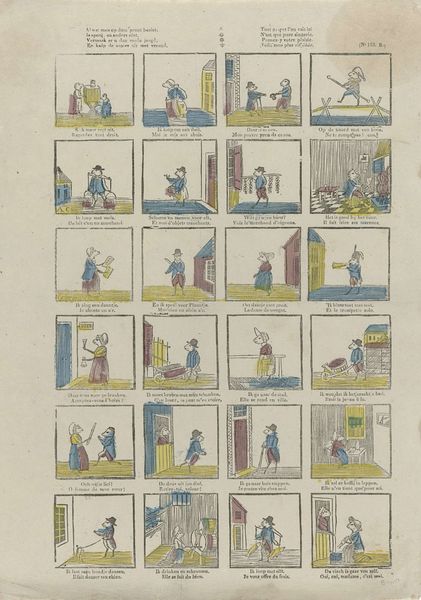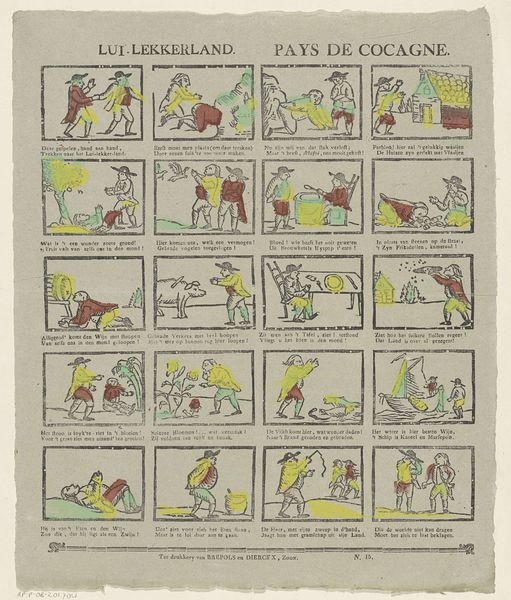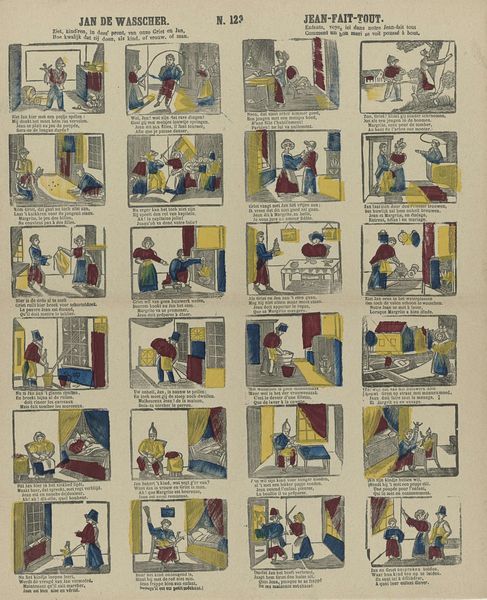
graphic-art, lithograph, print, paper
#
graphic-art
#
comic strip sketch
#
quirky illustration
#
narrative-art
#
comic strip
#
dutch-golden-age
#
lithograph
# print
#
paper
#
folk-art
#
genre-painting
Dimensions: height 384 mm, width 321 mm
Copyright: Rijks Museum: Open Domain
Curator: Here we have "Levensgeschiedenis van mooi Antje van Ouwerkerk," which translates to “Life Story of Beautiful Antje of Ouwerkerk.” Created between 1833 and 1900 by the firm Glenisson & Van Genechten, it’s a lithograph on paper, presented in a comic strip style. Editor: Immediately, I'm struck by its quaint charm. It’s like a faded memory, those simple colour washes hinting at a gentler time. A little bit dreamlike, really. Curator: Yes, and each scene meticulously illustrates moments from Antje’s life – domestic tasks, learning, interactions, her place in the household. The lithographic printmaking process, allowing for multiple reproductions, hints at a desire to disseminate these domestic ideals to a broader audience. What is valued here is the representation of labor and how it shapes social structure. Editor: I see that domesticity, sure, but the little stories hinted at in each frame pull me in. Like, is she content spinning that wool, or dreaming of adventures? The whole thing reads like snippets of a fairy tale, filtered through the everyday. Did anyone read these as, well, subversive? Is Antje truly *beautiful*, as the title implies? Curator: That’s a valid question. Consider this as potentially circulated amongst emerging middle-class households. How the labor and gender roles become solidified via printed matter opens the material questions up to interpretation. This is an age of industrialization, the mechanization and the social meaning behind it all seeps into these images, informing its readership on their respective stations in life. Editor: Materially, it's straightforward, humble even, with the paper and print. Yet there’s a tenderness I get. You're right about its context in solidifying these middle-class ideals, but there's something bittersweet here for me, like looking at pressed flowers. Maybe Antje deserves more than a series of repetitive tableaux of virtuous acts. Curator: Perhaps it lies in tension: mass production techniques applied to something intended as intimate, biographical. We find ourselves stuck asking *What does Antje do?*, *How does she produce*? But in doing so, we, too, recognize its production, and the conditions that allow for it. Editor: Well, seeing it this way adds even more to it! Thanks, I now will forever wonder what happened next for Antje… Curator: The image definitely lends itself to inquiry, prompting a deep conversation about how production manifests both image and subject.
Comments
No comments
Be the first to comment and join the conversation on the ultimate creative platform.


